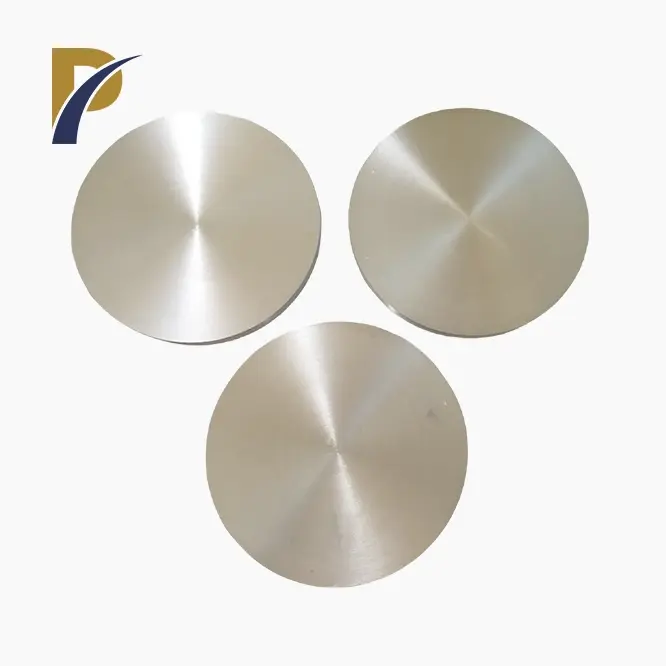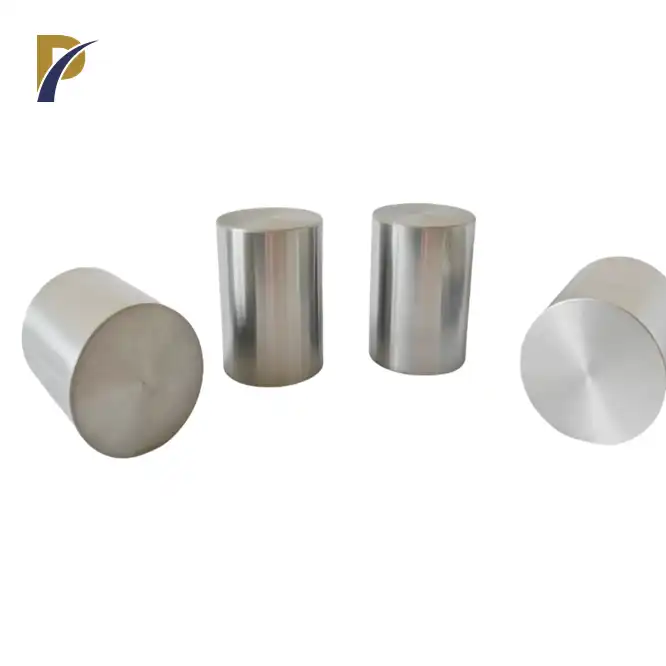Composition and Structure of Molybdenum TZM Alloy
Chemical Composition
The unique blend of elements in molybdenum TZM alloy contributes significantly to its superior mechanical properties. Typically, this alloy consists of approximately 99% molybdenum, with small but crucial additions of titanium (0.5-0.8%) and zirconium (0.08-0.12%). These carefully controlled proportions result in an alloy that surpasses pure molybdenum in several key aspects. The titanium and zirconium act as grain refiners and carbide formers, enhancing the alloy's overall strength and stability at elevated temperatures.
Microstructure Analysis
The microstructure of molybdenum TZM alloy plays a pivotal role in its mechanical behavior. During the manufacturing process, the alloy undergoes specific heat treatments that promote the formation of fine, dispersed carbides. These carbides, primarily titanium and zirconium carbides, are distributed throughout the molybdenum matrix. This unique microstructure is responsible for the alloy's exceptional creep resistance and high-temperature strength. Electron microscopy reveals a complex network of grain boundaries and carbide particles that work synergistically to impede dislocation movement, thereby enhancing the molybdenum TZM alloy's overall mechanical performance.
Grain Structure and Its Impact
The grain structure of molybdenum TZM alloy is characterized by its fine, equiaxed grains. This refined grain structure is a direct result of the alloying elements and processing techniques employed. The presence of titanium and zirconium inhibits grain growth during high-temperature exposure, maintaining the alloy's strength and dimensional stability. This feature is particularly valuable in applications where thermal cycling or prolonged high-temperature operation is expected. The controlled grain structure also contributes to the alloy's improved ductility compared to pure molybdenum, making it more workable and less prone to brittle failure.
Mechanical Properties of TZM Alloy
Tensile Strength and Yield Strength
One of the most notable mechanical properties of molybdenum TZM alloy is its exceptional tensile strength. At room temperature, TZM alloy typically exhibits a tensile strength ranging from 700 to 1000 MPa, significantly higher than that of pure molybdenum. This high tensile strength is maintained even at elevated temperatures, with the alloy retaining much of its strength up to 1300°C. The yield strength of TZM alloy is equally impressive, often exceeding 600 MPa at room temperature. This combination of high tensile and yield strength makes TZM alloy an excellent choice for applications requiring load-bearing capabilities under extreme conditions.
Creep Resistance and High-Temperature Stability
Perhaps the most distinguishing feature of molybdenum TZM alloy is its outstanding creep resistance. Creep, the tendency of a material to deform slowly under constant stress, is a critical concern in high-temperature applications. TZM alloy exhibits superior creep resistance compared to many other high-temperature materials, maintaining its structural integrity even under prolonged stress at temperatures exceeding 1200°C. This exceptional creep resistance is attributed to the alloy's fine-grained structure and the presence of stable carbide particles, which effectively pin grain boundaries and dislocations, preventing deformation under load at high temperatures.
 |
 |
Hardness and Wear Resistance
The hardness of molybdenum TZM alloy contributes significantly to its wear resistance and overall durability. Typically, the Vickers hardness of molybdenum TZM alloy ranges from 220 to 250 HV, which is considerably higher than that of pure molybdenum. This increased hardness translates to excellent wear resistance, making TZM alloy suitable for applications involving friction and abrasion, particularly at elevated temperatures. The alloy's ability to maintain its hardness at high temperatures further enhances its suitability for tooling and die applications in hot-working processes.
Applications Leveraging TZM Alloy's Mechanical Properties
Aerospace and Rocket Propulsion
The aerospace industry heavily relies on the mechanical properties of molybdenum TZM alloy, particularly in rocket propulsion systems. The alloy's high strength-to-weight ratio, coupled with its excellent high-temperature stability, makes it an ideal material for components exposed to extreme heat and stress. TZM alloy is commonly used in rocket nozzle throats, where it withstands the intense heat and erosive forces of rocket exhaust gases. Its creep resistance ensures that these critical components maintain their dimensional stability during operation, contributing to the overall reliability and efficiency of propulsion systems.
Nuclear Reactor Components
In the nuclear industry, the mechanical properties of molybdenum TZM alloy are harnessed for various critical applications. The alloy's high-temperature strength and excellent corrosion resistance make it suitable for use in nuclear reactor components, such as fuel element cladding and control rod assemblies. Molybdenum TZM alloy's ability to maintain its structural integrity under neutron bombardment and at elevated temperatures ensures the safe and efficient operation of nuclear reactors. Additionally, its low thermal expansion coefficient minimizes thermal stresses in reactor components, enhancing overall system reliability.
Semiconductor Manufacturing Equipment
The semiconductor industry benefits greatly from the unique mechanical properties of molybdenum TZM alloy. In the manufacture of integrated circuits and other electronic components, TZM alloy is used in high-temperature furnace components, sputtering targets, and heat shields. Its excellent dimensional stability at high temperatures ensures precise control in semiconductor processing, while its high thermal conductivity facilitates efficient heat management. The alloy's resistance to deformation under load at elevated temperatures makes it ideal for supporting structures in semiconductor manufacturing equipment, where maintaining precise alignments is crucial for product quality.
Conclusion
Molybdenum TZM alloy stands out as a surprising fabric, advertising an interesting combination of mechanical properties that are significant in different high-performance applications. Its uncommon pliable quality, creep resistance, and high-temperature solidity make it an important resource in industries extending from aviation to atomic control and semiconductor fabricating. As building challenges proceed to thrust the boundaries of fabric capabilities, the mechanical properties of TZM amalgam will without a doubt play an increasingly noteworthy part in mechanical progressions and industrial developments.
Contact Us
For more information about molybdenum TZM alloy and its applications, please contact us at info@peakrisemetal.com. Our team of experts is ready to assist you in finding the perfect solution for your high-performance material needs.
